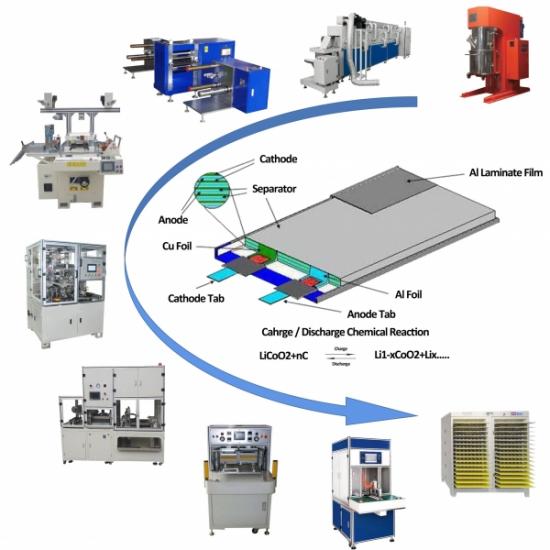Pouch Cell Production line: Technological Advancements for Flexible Battery Production
Introduction:
The rapid growth of wearable devices, portable electronics, and electric vehicles has fueled the demand for flexible and lightweight batteries. Pouch cells have emerged as a promising solution, offering high energy density and design flexibility. To meet the evolving market needs, the establishment of a Pouch Cell Production machine with advanced technological capabilities is crucial. In this blog post, we will explore the key technological aspects of a Pouch Cell Fabrication Plant and its role in enabling the production of high-performance flexible batteries.
Electrode Coating:
One of the critical processes in pouch cell production is electrode coating. Advanced coating technologies, such as doctor blade or slot-die coating, are employed to achieve precise and uniform electrode layers. These technologies ensure consistent coating thickness and distribution, optimizing the electrochemical performance of the battery.
Cell Assembly:
Pouch cell assembly involves the stacking of electrode layers, separator insertion, and electrolyte filling. Automated assembly systems equipped with robotic arms ensure accurate alignment of components and minimize the risk of damage or misalignment. This improves the overall reliability and consistency of pouch cell production.
Sealing and Encapsulation:
To ensure the integrity and safety of pouch cells, proper sealing and encapsulation techniques are employed. Heat-sealing methods, such as impulse or continuous heat sealing, are utilized to create a robust and hermetically sealed pouch cell structure. This prevents electrolyte leakage and maintains the long-term stability of the battery.
Testing and Quality Control:
Stringent testing and quality control measures are implemented throughout the pouch cell fabrication process. Advanced testing equipment, including capacity analyzers, impedance analyzers, and cycling testers, are used to evaluate the electrochemical performance and reliability of the batteries. These tests ensure that each pouch cell meets the required specifications and quality standards.
Automation and Robotics:
Automation plays a significant role in enhancing the efficiency and productivity of a Pouch Cell Fabrication Plant. Robotic systems are employed for material handling, cell assembly, and packaging processes. Automated workflows reduce human error, increase throughput, and improve overall production consistency.
Material Innovation:
Continuous research and development efforts are focused on improving the materials used in pouch cells. This includes electrode materials, electrolytes, and separators. Advanced materials, such as high-capacity cathode materials and solid-state electrolytes, are being explored to enhance energy density, cycling performance, and safety.
Safety Measures:
Safety is of paramount importance in battery manufacturing. Pouch Cell manufacturing line implement safety protocols and measures to prevent thermal runaway, short circuits, and other potential hazards. This includes strict handling procedures for flammable materials, fire detection and suppression systems, and comprehensive safety training for the workforce.
Process Optimization:
Continuous process optimization is conducted to enhance the efficiency and yield of pouch cell production. Advanced data analytics, machine learning algorithms, and real-time monitoring systems are employed to identify bottlenecks, optimize process parameters, and improve overall manufacturing performance.
Conclusion:
A Pouch Cell Fabrication Plant combines advanced technologies and innovative manufacturing processes to enable the production of high-performance flexible batteries. Through advancements in electrode coating, cell assembly, sealing, testing, automation, and material innovation, the plant achieves consistent and reliable pouch cell production. With a strong focus on technological advancements, these plants contribute to the growth of the flexible battery industry, meeting the demands of various applications and driving the transition to a more sustainable and connected future.




 Online service
Online service
